- PhD Students – Supply Food June 15, 2020
Mangla Times – June 11
Continue reading →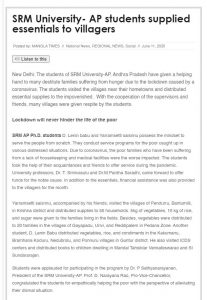
Global Greenews – June 15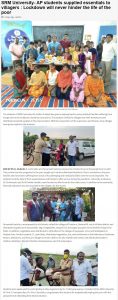
Global Greenews – June 11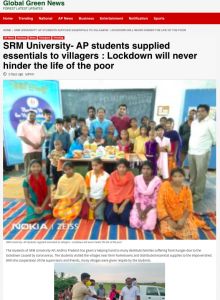
India Education Diary – June 15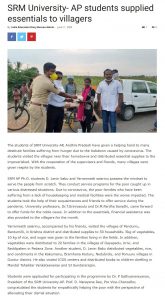
India Education Diary – June 11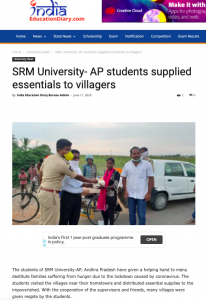
Covaimail – June 15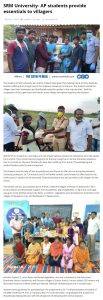
Covaimail – June 11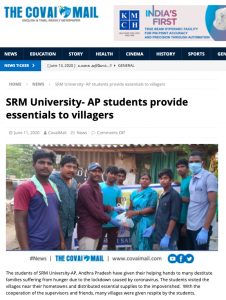
Collegedunia – June 15
Collegedunia – June 11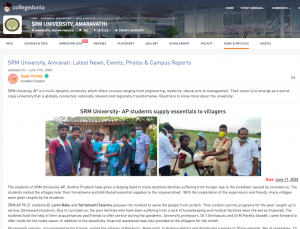
Higher Education Plus – June 12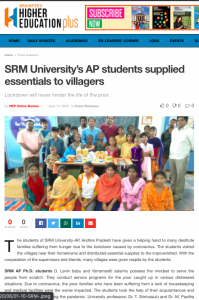
Business Journalist – June 15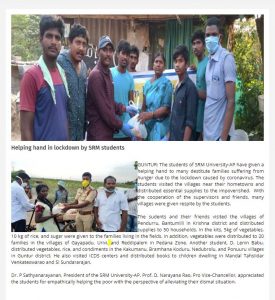
Business Journalist – June 12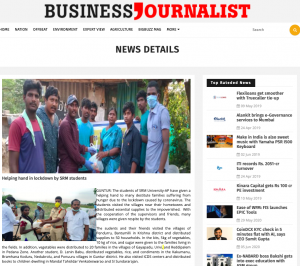
Andra Prabha – June 11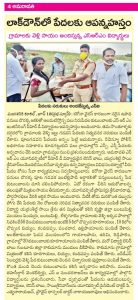
- SRMAP’s contribution made SRMIST the No.1 private university in India June 14, 2020
The very young SRM University-AP is already creating marvels by scaling new heights as a multidisciplinary research university. The 3-year-old university has published six very impactful research papers in a year in Nature Indexed journals. The notable research work helped significantly its sister aka principal institution SRM Institution of Science and Technology acquiring the rank of No.1 private university in India and 21 among Indian universities by the Nature Index 2020. The ranking was done based on Nature Index data from January 1st 2019 to December 31st 2019.
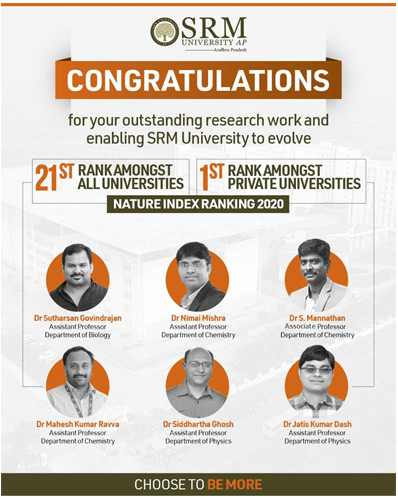
The Nature Index provides a perspective on high –quality research on the basis of published articles. The Nature Index provides a close to real-time proxy of high-quality research output and collaboration.
Nineteen research articles were published by the faculty members of SRMIST and its sister institutes between April 1st 2019 and March 31st 2020. These articles were compiled into a database by Nature Research to create the Nature Index rankings. Out of these nineteen articles, twelve were published by the Faculty Members of SRMIST, KTR Campus. One article was published by a faculty member of SRM University – Sikkim. The rest of the six articles were published by faculty members of SRM University- AP, Andhra Pradesh. Dr Sutharsan Govindrajan, Department of Biological Sciences; Dr Nimai Mishra, Dr S. Mannathan, Dr Mahesh Kumar Ravva, Department of Chemistry; Dr Siddhartha Ghosh and Dr Jatis Kumar Dash, Department of Physics played a pivotal role in achieving the honour for SRM University-AP. It is remarkable that SRM-AP, even in its budding stage, has contributed to around one third of the Nature Index score.
Dr Sutharsan’s paper, “A bacteriophage nucleus-like compartment shields DNA from CRISPR nucleases”, published in Nature, involves the discovery of novel strategies used by bacteriophages (viruses that kill bacteria) to overcome the bacterial CRISPR-Cas system, which are molecular scissors that are programmed to cut DNA. His findings have massive implications on the society as it has the ability to reshape the boundaries of the Phage-therapy in curing diseases.
Dr Mishra has published a paper titled “Broadband Defects Emission and Enhanced Ligand Raman Scattering in 0D Cs3Bi2I9 Colloidal Nanocrystals”. It is about excitonic 0D and 2D lead-halide perovskites that have been recently developed and investigated as new materials for light generation. In this work, a broadband (>1 eV) emission from newly synthesised 0D lead-free colloidal Cs3Bi2I9 nanocrystals (NCs) is reported. Remarkably, evidence of enhanced Raman scattering from the ligands is observed when attached to the NCs surface, an effect that is preliminarily attributed to strong exciton-ligands electronic coupling in these systems. Such interesting properties can be extremely appealing for a new class of low-cost materials suitable for solid-state lightning and sensing applications.
Dr Mannathan’s research article, “Palladium/Copper-Catalyzed Denitrogenative Alkylidenation and ortho-Alkynylation Reaction of 1,2,3-Benzotriazin-4(3H)-ones”, describes an environmentally friendly strategy to access various functionalised isoindolinones and 3-(imino)isobenzofuranones, which are important backbone in many natural products and biological active compounds. These reactions were enabled by an interesting Pd/Cu-cocatalyzed denitrogenative tandem alkynylation/cyclisation sequence. The strategy was also successfully employed to synthesise (Z)-3-benzylideneisobenzofuran-1(3H)-one derivatives in good to high yields.
Dr Mahesh’s paper is named “Harnessing Autoxidation of Aldehydes: In Situ Iodoarene Catalyzed Synthesis of Substituted 1,3,4-Oxadiazole, in the Presence of Molecular Oxygen”. In this study, a new methodology has been developed for the synthesis of substituted 1,3,4-oxadiazoles, which are essential pharmaceutical ingredients. We have modelled the reactivity of reactants, reactive intermediates, and products using computational protocols. Results obtained from these computational protocols are used to predict the reaction pathways and gain insights on the stability of products.
Dr Ghosh published “Direct Growth of Wafer-Scale, Transparent, p-Type Reduced-Graphene-Oxide-like Thin Films by Pulsed Laser Deposition”. His study reveals that reduced graphene oxide (rGO) is a derivative of widely used 2-D material called Graphene. Along with Graphene itself, rGO is also an exciting material for research communities due to its potential application in gas sensing, water purification and desalination, energy storage and flexible electronics. All these novel applications require a reproducible & scalable growth process for rGO thin films. In their research article, they have reported a single-step bottom-up growth process of reduced Graphene Oxide using a thin-film growth technique called Pulsed Laser Deposition (PLD). Utilising the state-of-the-art laser beam scanning technology, they have been able to grow 4-inch wafer-scale rGO thin-films with ultra-smooth surfaces and unparallel thickness uniformity. Moreover, they have found that these rGO thin-films are transparent and conducting with some of the lowest extinction coefficients and refractive index values. They believe this novel growth process combined with the exotic opto-electronic properties (of rGO) will enable us to directly grow and integrate rGO thin-films on Si & metal-oxide based hetero-structures and will potentially move forward the rapid deployment of rGO for various applications.
Dr Dash’s article is titled as “Thickness-Insensitive Properties of α-MoO3 Nanosheets by Weak Interlayer Coupling”. Extensive use of portable electronic products and the rapidly growing commercial markets in smart electric appliances have created a seemingly high demand for flexible, wearable and foldable high-performance photoelectric devices. In the search for new materials to meet these criteria, one promising solution may be the two-dimensional (2D) layered heterostructures, assembled by stacking different conventional 2D materials in hetero-layered architectures. Alpha (α) phase-molybdenum trioxide (MoO3) is one of the promising 2D oxides, which is a chemically stable semiconductor with a high dielectric constant. The high resistive tunnelling and dielectric constant also shows that α- MoO3 nanosheet can be used as a promising dielectric or tunnel barrier. Therefore, the epitaxially grown MoO3 can be an important candidate in the field of 2D materials-based nanoelectronics. α- MoO3 layers can also be used as dielectrics for supercapacitors, and channel materials for high power electronics. Besides these, heterojunctions like Graphene-α- MoO3 and α- MoO3 /MoS2 has its applications in Field effect transistors (FETs), battery cathode materials, and various sensors.
The Nature Index is a database of author affiliations and institutional relationships. The index tracks contributions to research articles published in 82 high-quality natural science journals, chosen by an independent group of researchers. This Index provides absolute and fractional counts of article publication at the institutional and national level and, as such, is an indicator of global high-quality research output and collaboration.
Continue reading → - Workshop on “Deep Learning-based Computer Vision and its Applications” June 14, 2020
Dr Sandeep Singh Sengar, Assistant Professor, Department of Computer Science and Engineering, is organising a workshop for the enthusiasts on “Deep Learning-based Computer Vision and its Applications” on 19th and 20th June 2020 at 11 a.m. onwards.
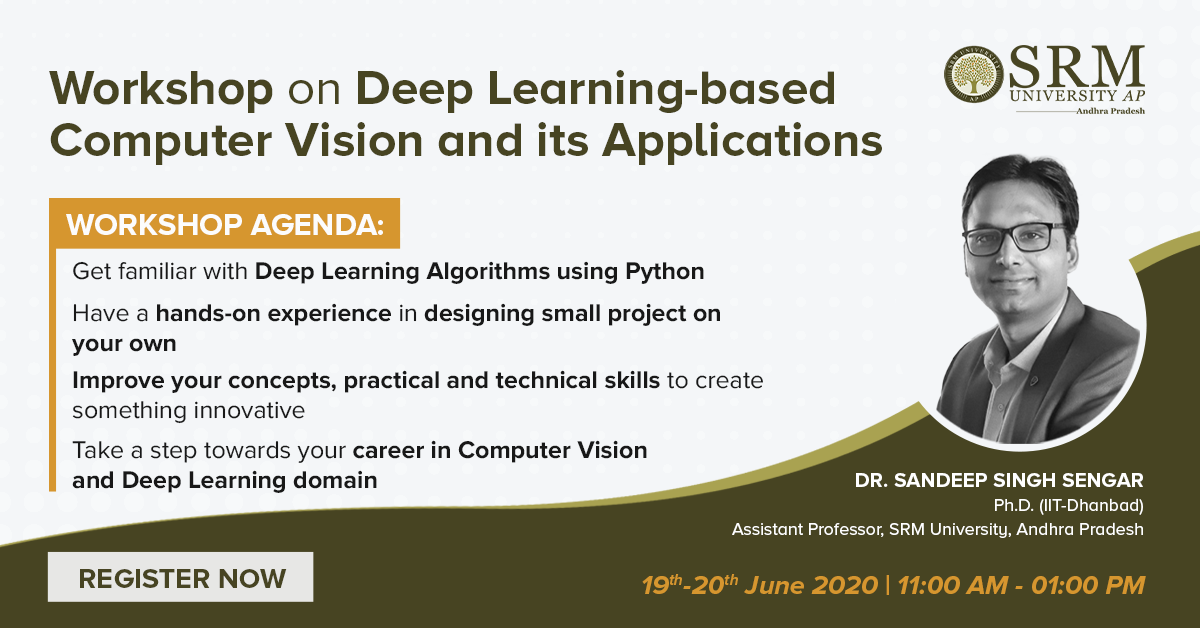
One of the main targets of Computer Vision is to interpret the content of Image and Video data. Machine/Deep learning is the science of designing and applying algorithms that can learn things from past cases. The workshop will focus on the concept and understanding of Image and Video Processing, Computer Vision and Deep Learning. In the workshop, participants will gain basic knowledge in the domains as well as hands-on experience in application and problem-solving. Attending the workshop will help participants immensely to come up with innovative ideas, but more importantly, they will have gained knowledge that could instantly set them apart from the crowd. The workshop is an excellent opportunity for those who want to build a career in this domain. In addition to that, research scholars, faculties or industry persons will also be benefitted from the action-oriented discussion and shared knowledge.
Registration Link: https://srmap.zoom.us/meeting/register/tJUvceuspzIrE9I0l6gBgvluSHgMXThsDOE1
Continue reading → - Dr. Sambit Kumar Mishra June 10, 2020
- SRM-AP’s liaison with TEDx to promote active thinking June 10, 2020
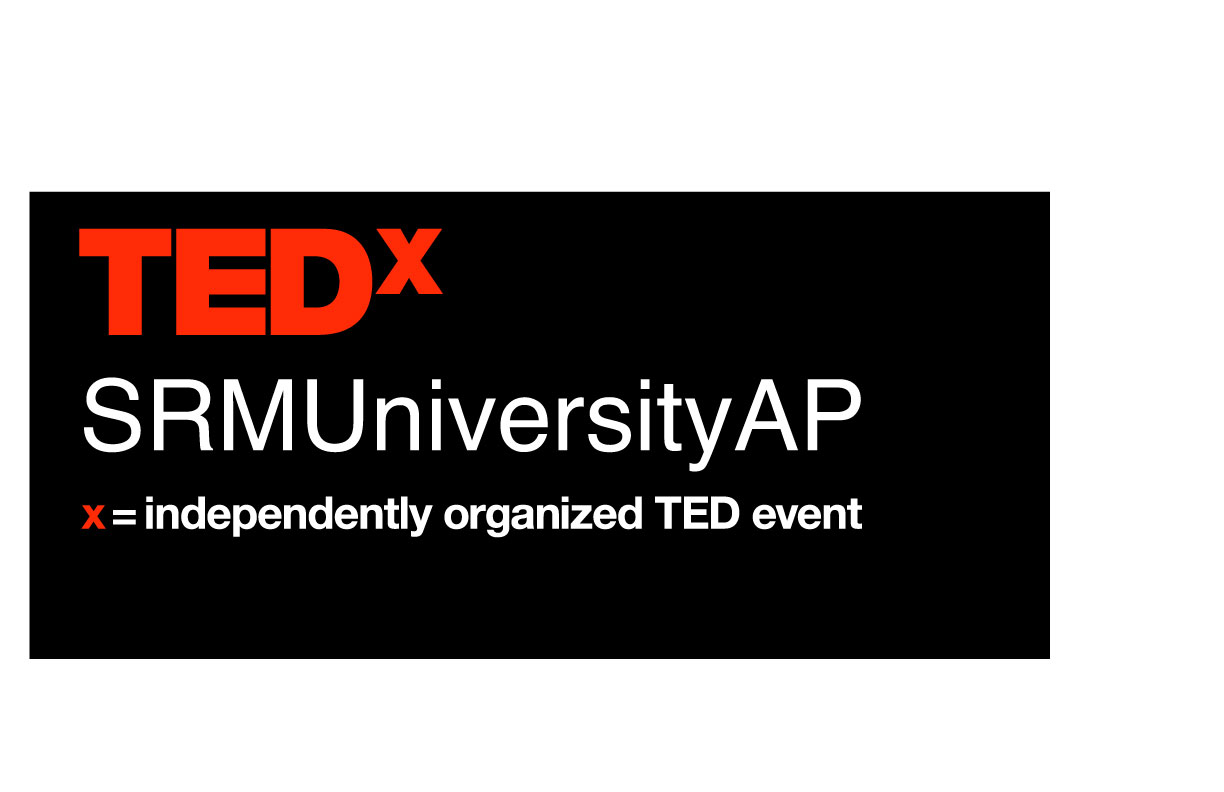 Globally, TEDx events are incredibly appealing for their cutting-edge and progressive ideas from the speakers. TEDx carefully curates, magnifies, and develops these ideas, that can genuinely change the world for the better. SRM University AP now joins the TEDx community to take it to an entirely new level.
Globally, TEDx events are incredibly appealing for their cutting-edge and progressive ideas from the speakers. TEDx carefully curates, magnifies, and develops these ideas, that can genuinely change the world for the better. SRM University AP now joins the TEDx community to take it to an entirely new level.
A TEDx event is a local gathering where live TED-like talks and performances are shared with the community. TEDx events are thoroughly planned and coordinated independently, on a community-by-community basis. The content and design of each TEDx event is unique and developed independently, but all of them are expected to abide by the standards and rules set by TED. This event can be extremely advantageous to the university not only in terms of the knowledge that the talks bring but because of the ambience, optics & publicity that it provides.
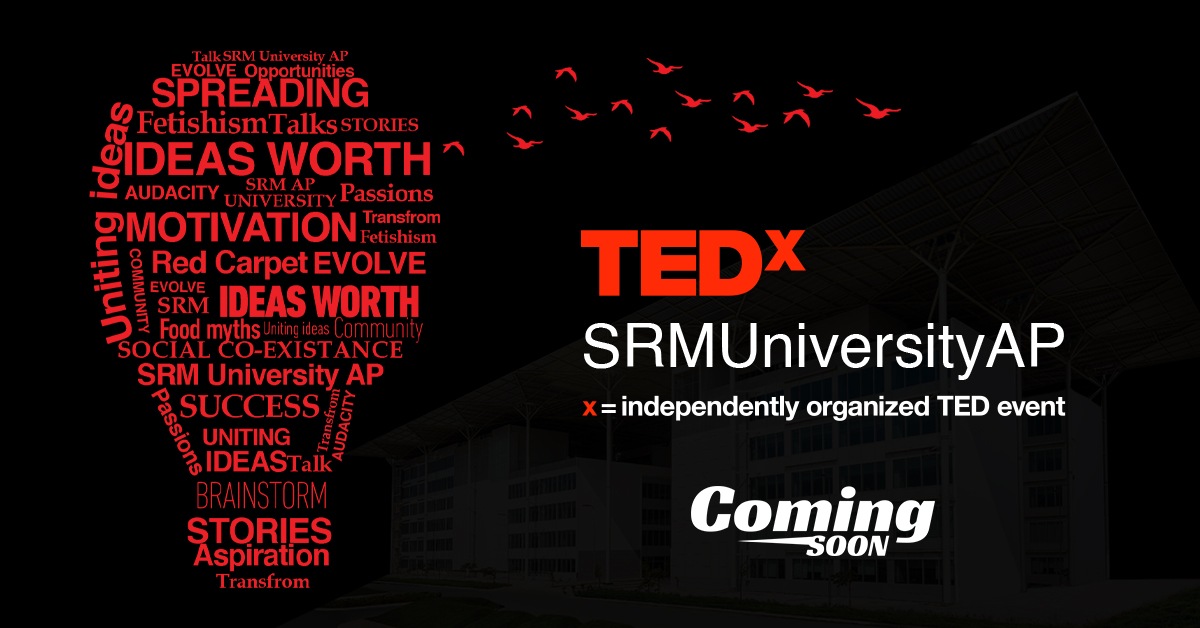
“We’ve been working towards acquiring the license for months, and we are pleased to inform that our application for TEDxSRMUniversityAP has finally been approved! The application process involved presenting our ideas and defending the questions by the representatives at TED. Overall, it was a good experience,” said Dr Bhanukiran, Assistant Professor in the Department of Computer Science and Engineering. This license permits SRM University- AP to organise one TEDx event within the next 12 months which means it is valid till May 12, 2021, and allows an attendee limit up to 100.
SRM University- AP is now setting up a dedicated website for the event where all the information will soon be announced. The students, staff and faculty are all thrilled to facilitate the event. The TEDx team will meet soon to discuss and finalise the details of the event.
Continue reading →

